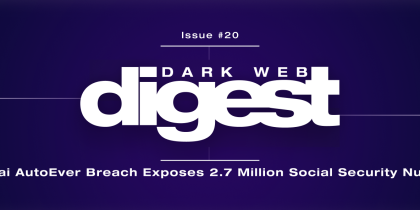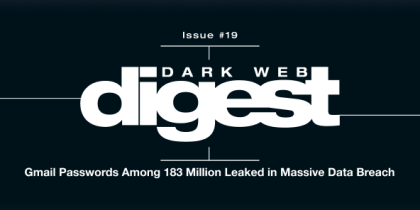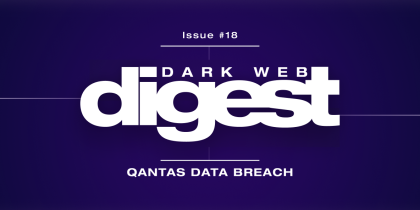Your email could be compromised.
Scan it on the dark web for free – no signup required.
Imagine trusting a widely-used SaaS analytics platform with your customer insights, CRM integrations, and pipeline data, only to learn that a third-party quietly became the back-door hackers used to access Salesforce environments.
That’s exactly what unfolded with the Gainsight–Salesforce supply-chain breach, a growing incident now linked to more than 200 customer orgs of Salesforce, according to threat-intelligence reports.
This wasn’t a simple app bug; this was a direct hit to the SaaS supply chain, where attackers abused trusted connections to unlock sensitive corporate records across hundreds of companies.
And once customer data, internal CRM notes, and business contact details seep into dark web markets, cybercriminals weaponize it for spear-phishing, account take-overs, and large-scale B2B fraud.
The Breach at a Glance
- Breach Target: Gainsight applications integrated inside Salesforce customer environments
- Attack Type: Supply-chain compromise leveraging OAuth / connected-app tokens
- Impact: Unauthorized access to Salesforce org data across > 200 customer orgs (some sources suggest up to ~1,000 orgs in related campaigns)
- Data at Risk: Customer contact details, business emails, phone numbers, support-case content, internal CRM metadata.
- Cause: Malicious activity traced to Gainsight-published apps; attackers leveraged trusted integrations rather than exploiting a vulnerability in Salesforce’s core platform.
- Immediate Action: Salesforce revoked active tokens for the affected Gainsight apps and temporarily removed them from marketplaces.
Dark Web Tip: 👉 Run a Dark Web Exposure Scan to see whether your business email or CRM-associated accounts are appearing in breach logs.
What Happened?
In November 2025, Salesforce’s security monitoring flagged “unusual activity” coming through Gainsight-published applications installed by its customers
The attackers are believed to have exploited OAuth tokens issued to Gainsight applications — these tokens provide established, trusted connections into Salesforce orgs and can bypass certain access controls.
Once inside, they could freely query CRM data via the Salesforce API, accessing contact lists, support case logs, licensing data, and other sensitive internal information.
This wasn’t a breach of Salesforce’s platform itself.
It was a breach of a third-party integration, and that’s what makes it so dangerous.
What Salesforce & Gainsight Have Said?
Salesforce’s advisory includes the following points:
- They detected unauthorized activity via Gainsight-published apps and are investigating.
- They revoked all active access and refresh tokens associated with the affected Gainsight apps.
- The issue does not appear to stem from a vulnerability in the Salesforce platform itself.
- They have notified impacted customers; exact numbers of affected orgs or records weren’t yet detailed by Salesforce.
Gainsight, meanwhile:
- Confirmed they are working with Salesforce and cybersecurity investigators to review and remediate.
- Not yet published definitive numbers on how many of their customers or what data was accessed.
What Was Leaked (or at Risk)?
Based on reporting so far, the following data types may have been accessed:
- Full names and business contact details of customers, leads, and employees.
- Business email addresses and direct phone numbers.
- Support case contents and CRM metadata (internal notes, licensing info, regional/location fields), though not necessarily attachments
- Because the attack targeted CRM/back-end systems, even without complete financial data, the stolen data is highly valuable for business fraud, spear-phishing, and supply-chain exploitation.
Here’s what we don’t yet have:
- A confirmed number of individual records (e.g., “X million contacts/data points”).
- A public list of impacted customer orgs.
- A detailed breakdown of exactly which fields were exfiltrated.
Who’s Behind It?
Salesforce has officially attributed no publicly confirmed hacker group.
However, multiple analysts and threat-intelligence reports link the campaign to the group ShinyHunters (also tied to UNC6240) — the same actors previously involved in SaaS supply-chain hacks of Salesforce via other apps.
The key indicators:
- Similar modus operandi to earlier attacks where OAuth tokens were stolen from a SaaS app and used to access downstream environments.
- Claim by ShinyHunters that they impacted up to ~1,000 organizations across the Salesloft and Gainsight campaigns.
Even without a claim of responsibility, the scale and method are consistent with major supply-chain campaigns.
What’s Happening on the Dark Web?
Dark-web monitoring firms are already reporting:
- Discussion of Salesforce-linked data from Gainsight integrations.
- Credential-bot logs that list emails tied to Salesforce orgs, possibly from this breach.
- Early “identity combo” leaks (company email + phone number + role) are appearing in underground forums.
- While full data dumps haven’t surfaced publicly (or haven’t been independently verified), partial records are circulating.
The pattern shows: once data leaks from a CRM or integrated back-end system, it quickly becomes resold, repackaged, and used for:
- B2B spear-phishing (targeting executives, account teams)
- Business Email Compromise (BEC)
- Credential stuffing into other enterprise applications (leveraging business email + role)
- Supply-chain fraud (e.g., impersonating vendors, altering account info)
Why This Breach Hits Hard?
Why the breach deserves serious attention:
• It hits a SaaS supply-chain connector
Instead of breaching one company, the attackers contaminated an integration used by many companies.
• OAuth tokens bypass traditional defenses
Integrated apps can have broad permissions and rarely get the same scrutiny as core platforms.
• CRM/back-end data = gold
Unlike consumer data (email + password), business contact lists, internal notes, and opportunity data can yield deep insight and highly targeted attacks.
• Long-tail risk
Even if immediate damage is limited, the stolen data can fuel attacks for months or years — because business contacts and roles don’t expire like passwords.
• Ecosystem impact
The risk isn’t just for Salesforce customers — any company using Gainsight (or similarly integrated SaaS tools) should assume potential exposure.
What Experts Are Saying?
Security researchers say this incident reflects a shift in attack surface:
“Attackers don’t need to breach your company — they breach the apps your company trusts.”
They warn:
- SaaS-to-SaaS integrations (OAuth, API connectors) are the new frontier of enterprise risk.
- Many organizations still treat connected apps as functional plumbing, not full security assets.
What You Should Do Right Now?
If you use Salesforce, Gainsight, or any connected SaaS tools, here are actionable steps:
1. Run a Dark Web Exposure Scan
Check if your company email domain, executive names, or known contacts appear in breach logs.
2. Audit all connected apps in your CRM
- List every integration (especially Gainsight, other analytics or customer-success apps).
- Review scopes/permissions for each connected app.
- Remove or disable any unused apps or ones you no longer trust.
3. Rotate OAuth tokens and connected-app credentials
Even if unaffected, shift tokens & credentials to reduce risk of reuse.
4. Enforce multi-factor authentication (MFA) and limit integration user access
Ensure only minimal access is allowed for service accounts connected to third-party apps.
5. Monitor for suspicious API or data-export activity
- Unusually large data queries
- Access from unexpected IP addresses or times
- OAuth token usage outside business hours
6. Train your leadership and customer-success teams
They’re likely targets now:
- click-bait emails saying “your Gainsight/CRM case needs urgent review”
- spear-phish referencing internal workflows
7. Assume long-tail risk
Treat this as a multi-year threat event — not a single incident. Even if you weren’t impacted now, that doesn’t mean you won’t feel the effects later.
The Broader Dark Web Picture
The Gainsight incident underscores what’s happening across cloud ecosystems:
- Industrial scale supply-chain attacks are moving into SaaS integrations.
- Attackers are not just stealing consumer data anymore — they’re going after business data and enterprise workflows.
- The dark web is evolving: business contacts, licensing info, CRM metadata are becoming commodities.
- Companies that think: “We secured our core platform” — they may be wrong if they ignore the connected apps ecosystem.
The stolen Salesforce-linked data (via Gainsight) will likely be repackaged — even if not yet publicly listed and steadily appear over time in underground markets.
What’s Next – Final Thoughts
The Gainsight–Salesforce breach serves as a critical wake-up:
In a cloud world, your trust boundary extends beyond your firewall — it includes every integration your business grants access to.
Here’s your takeaway:
- Keep monitoring your identity and enterprise systems
- Run dark-web scans regularly
- Treat OAuth tokens & connected apps as first-class security assets
- Audit your SaaS-supply-chain continuously
Every supply-chain breach is a reminder:
Data doesn’t leak just from the front door anymore — it leaks from the trusted back-door apps we seldom guard.
Why Subscribe to Dark Web Digest?
Every week, we cut through the noise and break down the breaches that actually matter — what happened, who’s affected, and how you can stay ahead. No jargon. No filler. Just clear, actionable intel.
If you don’t want to be the last one to know your data has surfaced on the dark web, subscribing is your safety net.
👉 Stay informed. Stay secure. Stay subscribed.
Note: This edition is based on publicly available information as of Nov 25, 2025.








